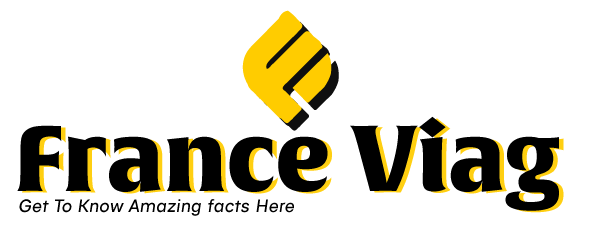To guarantee a successful artificial grass installation, avoid these common mistakes. First, don’t skip proper site preparation; it’s essential for stability and longevity. Ignoring drainage solutions can lead to water pooling, which can damage your lawn. Make sure to invest in high-quality materials, as low-grade options can quickly fade and deteriorate. Be cautious with infill application—proper depth and distribution are key. Pay attention to seaming techniques to prevent visible joints, and never overlook regular maintenance to keep your grass looking its best. By being mindful of these points, you’ll set the stage for a beautiful lawn that lasts.
Insufficient Site Preparation
One of the biggest mistakes you can make in artificial grass installation is skipping proper site preparation. Without it, your new lawn mightn’t perform as expected. Start by ensuring the soil is adequately compacted using effective soil compaction techniques. This step prevents shifting and settling over time, which can lead to uneven surfaces. Additionally, those considering AstroTurf alternatives might find that proper preparation is equally crucial for achieving a flawless finish.
Next, you should install a weed barrier to stop pesky weeds from growing through your grass. It’s essential to lay the barrier correctly, covering all exposed soil areas to maximize its effectiveness.
By prioritizing these elements, you create a solid foundation for your artificial grass, ultimately enhancing its lifespan and appearance.
Don’t underestimate the importance of thorough site preparation; it sets the stage for a successful installation.
Ignoring Drainage Solutions
When you install artificial grass, overlooking drainage solutions can lead to serious problems.
Make certain you assess the site’s topography and install proper grading to guarantee water flows away from the surface.
This simple step can prevent issues like pooling and damage to your new lawn.

Assess Site Topography
Evaluating the site’s topography is essential, as neglecting proper drainage solutions can lead to water pooling and damage to your artificial grass.
Start with a thorough site evaluation to identify slopes and low spots that may collect water. A proper soil assessment helps you understand how water drains through your ground, allowing you to make informed decisions.
If your site has poor drainage, consider amending the soil or adding drainage solutions before installation. Remember, a well-drained area guarantees your artificial grass lasts longer and performs better.
Taking the time to assess your site will save you headaches down the road and guarantee a successful installation. Don’t skip this critical step!
Install Proper Grading
Proper grading is essential for guaranteeing effective drainage, as ignoring this aspect can lead to costly issues down the line.
When installing artificial grass, you need to apply proper grading techniques to create a slight slope away from structures. This slope helps water flow naturally, preventing pooling and potential damage.
Additionally, pay attention to soil compaction; compacted soil can hinder drainage and lead to uneven surfaces. Before laying the grass, verify the ground is adequately graded and compacted to support the turf.
A well-executed grading process not only improves drainage but also enhances the overall durability of your artificial grass installation.
Choosing Low-Quality Materials
When you choose low-quality materials for your artificial grass, you risk compromising its durability and longevity.
This can lead to a lawn that looks worn out much sooner than expected, affecting its aesthetic appeal.
Investing in better materials not only enhances the look but also guarantees your grass stands the test of time.
Durability and Longevity
Choosing low-quality materials can greatly shorten the lifespan of your artificial grass, leading to premature wear and costly replacements.
When you skimp on quality, you’re risking the durability of your investment. Low-quality grass often lacks proper weather resistance, making it susceptible to damage from rain, wind, and extreme temperatures.
It can also fade quickly under the sun without adequate UV stability, which means your lawn might look worn out and unattractive in no time.
Opting for higher-grade materials guarantees that your artificial grass can withstand the elements, maintaining its integrity and appearance for years.
Aesthetic Appeal Considerations
Many homeowners underestimate how low-quality materials can ruin the aesthetic appeal of their artificial grass, making it look unnatural and uninviting.
When you choose cheaper options, you often sacrifice important factors like color selection and texture variety. Low-quality grass might have an unrealistic shade of green or lack the subtle color variations that mimic real grass. This can lead to a flat, lifeless appearance that detracts from your landscape.
Additionally, a lack of texture variety can make your yard look monotonous and unappealing.
Investing in high-quality artificial grass not only enhances your outdoor space but also guarantees it looks vibrant and inviting, creating an appealing environment for you and your guests.
Improper Infill Application
Improper infill application can lead to uneven surfaces and reduced durability of your artificial grass.
It’s essential to choose the right infill types based on your grass’s intended use. For instance, a heavier infill is ideal for high-traffic areas, while a lighter option works well for decorative spaces.
Make certain you achieve the correct infill depth, typically between one-half to one inch, to guarantee peak performance and appearance. If the infill is too shallow, your grass may not stand upright, and if it’s too deep, it can become matted and impede drainage.
Always distribute the infill evenly and brush it in to help maintain the grass blades’ upright position, giving your lawn a lush, natural look.
Neglecting Seaming Techniques
Neglecting proper seaming techniques can lead to visible joints and compromised aesthetics in your artificial grass installation. To avoid this mistake, guarantee that your seaming alignment is precise before you start.
Lay the pieces of grass side by side, checking that they fit snugly together without gaps. When applying adhesive, make sure to use the right type for your specific grass material and follow the manufacturer’s instructions.
Apply it evenly along the seam to secure the pieces firmly. A well-done seam not only enhances the appearance but also contributes to the overall durability of your installation.
Taking the time to perfect these techniques will pay off in a seamless, beautiful lawn that looks natural and stays intact.
Overlooking Maintenance Requirements
Overlooking maintenance requirements can lead to a decline in the appearance and longevity of your artificial grass.
It’s crucial to establish a routine for regular upkeep to keep your lawn looking fresh and vibrant. Regularly brushing the surface helps prevent matting and keeps the fibers upright, while occasional rinsing removes dust and debris.
Don’t forget about seasonal checks; they’re important for addressing any issues that may arise throughout the year. Inspect for weeds, debris buildup, or damage from pets.
By staying proactive with maintenance, you can guarantee your artificial grass stays beautiful and functional for years to come.







